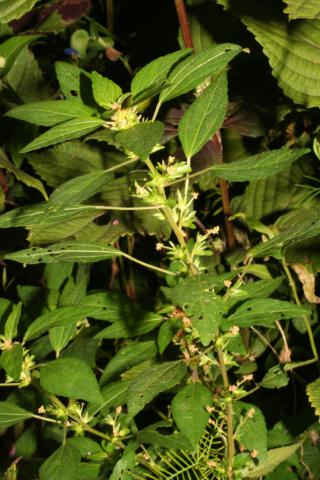
Permanent unique identifier for this particular organism:
http://bioimages.vanderbilt.edu/ind-baskauf/93894

|

|
|
Load database and switch to thumbnail view
Use this stable URL to link to this page:
http://bioimages.vanderbilt.edu/ind-baskauf/93894.htm
This particular organism is believed to have native means of establishment.
This organismal entity has the scope: multicellular organism.
Identifications:
Acalypha sp.
L.
sec. Tennessee Flora 2014
common name: copperleaf
family: Euphorbiaceae
Identified 2017-09-11 by Steven J. Baskauf
Location:
Woodlawn Drive, Davidson County, Tennessee, US
Click on these geocoordinates to load a map showing the location: 36.125603°, -86.810322°
Coordinate uncertainty about: 10 m.
Location determined from Google maps.
Occurrences were recorded for this particular organism on the following dates:
2017-09-11
The following images document this particular organism.
Click on a thumbnail to view the image and its metadata. Load database and enable navigation by taxon and organism.
















